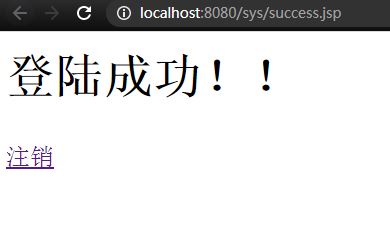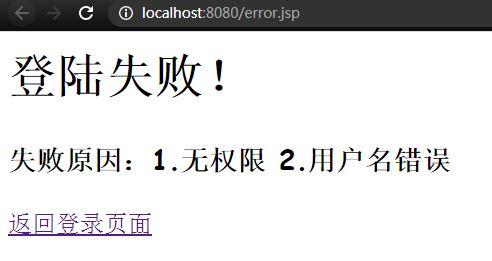Filter && Listener
1、过滤器
过滤器:阻碍一些不符合要求的数据。
常用在处理中文乱码、登录验证等
1.1、初步使用Filter
案例:我们将会通过Filter处理中文乱码
代码展示:
在这里,要注意继承的Filter接口是servlet的!以及三个固定的方法要写,还有filterChain也要写(作为中间商)
package com.charles.fillter; import javax.servlet.*; import java.io.IOException; public class CharacterEncodingFillter implements Filter { // 初始化 public void init(FilterConfig filterConfig) throws ServletException { System.out.println("CharacterEncoding初始化"); } public void doFilter(ServletRequest servletRequest, ServletResponse servletResponse, FilterChain filterChain) throws IOException, ServletException { servletRequest.setCharacterEncoding("utf-8"); servletResponse.setCharacterEncoding("utf-8"); servletResponse.setContentType("text/html;charset=UTF-8"); System.out.println("执行前"); // 让我们的请求继续走,不写则停下(中间商) filterChain.doFilter(servletRequest,servletResponse); System.out.println("执行后"); } // 销毁 public void destroy() { System.out.println("CharacterEncoding销毁"); } }
在web.xml中注册filter
这里注意<url-pattern>的意思是 servlet下的所有请求都要经过这个过滤器
<filter> <filter-name>CharacterEncodingFillter</filter-name> <filter-class>com.charles.fillter.CharacterEncodingFillter</filter-class> </filter> <filter-mapping> <filter-name>CharacterEncodingFillter</filter-name> <url-pattern>/servelet/*</url-pattern> </filter-mapping>
1.2、简单的登录案例
首先,我们先编写一个静态初始化参数,用来进行登录时对用户的验证
package com.charles.util; public class Constant { public final static String Servelet_Name = "Servelet_Name"; }
然后,我们编写过滤器:用来建议用户名是否为空
package com.charles.fillter; import com.charles.util.Constant; import javax.servlet.*; import javax.servlet.http.HttpServletRequest; import javax.servlet.http.HttpServletResponse; import java.io.IOException; public class SysFillter implements Filter { public void init(FilterConfig filterConfig) throws ServletException { } public void doFilter(ServletRequest servletRequest, ServletResponse servletResponse, FilterChain filterChain) throws IOException, ServletException { HttpServletRequest request = (HttpServletRequest) servletRequest; HttpServletResponse response = (HttpServletResponse) servletResponse; if (request.getSession().getAttribute(Constant.Servelet_Name) == null){ response.sendRedirect("/error.jsp"); } filterChain.doFilter(request,response); } public void destroy() { } }
之后,我们开始依次编写Servlet(登录检验、注销后的跳转)
package com.charles.servelet; import com.charles.util.Constant; import javax.servlet.ServletException; import javax.servlet.http.HttpServlet; import javax.servlet.http.HttpServletRequest; import javax.servlet.http.HttpServletResponse; import java.io.IOException; public class LoginServelet extends HttpServlet { @Override protected void doGet(HttpServletRequest req, HttpServletResponse resp) throws ServletException, IOException { String username = req.getParameter("username"); if (username.equals("admin")){ // 登陆成功 req.getSession().setAttribute(Constant.Servelet_Name, req.getSession().getId()); resp.sendRedirect("/sys/success.jsp"); } else { // 登陆失败 resp.sendRedirect("/error.jsp"); } } @Override protected void doPost(HttpServletRequest req, HttpServletResponse resp) throws ServletException, IOException { doGet(req, resp); } }
package com.charles.servelet; import com.charles.util.Constant; import javax.servlet.ServletException; import javax.servlet.http.HttpServlet; import javax.servlet.http.HttpServletRequest; import javax.servlet.http.HttpServletResponse; import java.io.IOException; public class LoginOut extends HttpServlet { @Override protected void doGet(HttpServletRequest req, HttpServletResponse resp) throws ServletException, IOException { Object attribute = req.getSession().getAttribute(Constant.Servelet_Name); if (attribute != null){ req.getSession().removeAttribute(Constant.Servelet_Name); resp.sendRedirect("/Login.jsp"); } } @Override protected void doPost(HttpServletRequest req, HttpServletResponse resp) throws ServletException, IOException { doGet(req, resp); } }
注册Servlet和Filter
<servlet> <servlet-name>LoginServelet</servlet-name> <servlet-class>com.charles.servelet.LoginServelet</servlet-class> </servlet> <servlet-mapping> <servlet-name>LoginServelet</servlet-name> <url-pattern>/servlet/login</url-pattern> </servlet-mapping> <servlet> <servlet-name>LoginOutServlet</servlet-name> <servlet-class>com.charles.servelet.LoginOut</servlet-class> </servlet> <servlet-mapping> <servlet-name>LoginOutServlet</servlet-name> <url-pattern>/servlet/loginout</url-pattern> </servlet-mapping> <filter> <filter-name>SysFilter</filter-name> <filter-class>com.charles.fillter.SysFillter</filter-class> </filter> <filter-mapping> <filter-name>SysFilter</filter-name> <url-pattern>/sys/*</url-pattern> </filter-mapping>
最后,依次编写网页(登录网页、登录后的网页、错误网页)
<%@ page contentType="text/html;charset=UTF-8" language="java" %> <html> <head> <title>Title</title> </head> <body> <form action="/servlet/login" method="post"> 用户名:<input type="text" name="username"> <input type="submit" value="登陆"> </form> </body> </html>
<%@ page contentType="text/html;charset=UTF-8" language="java" %> <html> <head> <title>Title</title> </head> <body> <h1>登陆成功!!</h1> <p> <a href="/servlet/loginout">注销</a> </p> </body> </html>
<%@ page contentType="text/html;charset=UTF-8" language="java" %> <html> <head> <title>Title</title> </head> <body> <h1>登陆失败!</h1> <h3>失败原因:1.无权限 2.用户名错误</h3> <a href="Login.jsp">返回登录页面</a> </body> </html>
运行Tomcat后,结果展示:
1、登录成功的效果


2、登录失败的效果


2、监听器
监听器用的比较少,这里用一个简单的案例来展示一下即可。
案例:监听访问该网页的次数,并打印内容次数至网页上
代码展示:
package com.charles.listener; import javax.servlet.ServletContext; import javax.servlet.http.HttpSessionEvent; import javax.servlet.http.HttpSessionListener; // 统计网站在线人数: 方法:统计session public class OnlineCountListener implements HttpSessionListener { // 创建session监听 public void sessionCreated(HttpSessionEvent se) { ServletContext ctx = se.getSession().getServletContext(); Integer onlineCount =(Integer) ctx.getAttribute("OnlineCount"); if (onlineCount == null){ onlineCount = new Integer(1); } else { int count = onlineCount.intValue(); onlineCount = new Integer(count++); } ctx.setAttribute("onlineCount", onlineCount); } // 销毁session监听 public void sessionDestroyed(HttpSessionEvent se) { ServletContext ctx = se.getSession().getServletContext(); Integer onlineCount =(Integer) ctx.getAttribute("OnlineCount"); if (onlineCount == null){ onlineCount = new Integer(0); } else { int count = onlineCount.intValue(); onlineCount = new Integer(count--); } ctx.setAttribute("onlineCount", onlineCount); } }
注册listener(这里注意,注册只需要写代码的路径即可)
<listener> <listener-class>com.charles.listener.OnlineCountListener</listener-class> </listener>
网页设计
<%@ page contentType="text/html;charset=UTF-8" language="java" %> <html> <head> <title>$Title$</title> </head> <body> <h1>当前有 <span style="color: red"><%=this.getServletConfig().getServletContext().getAttribute("onlineCount")%></span>人在线</h1> </body> </html>
结果展示:
